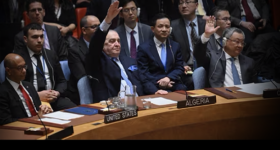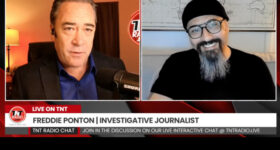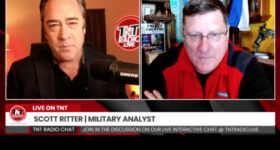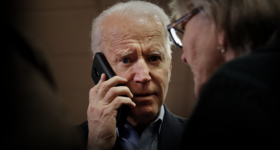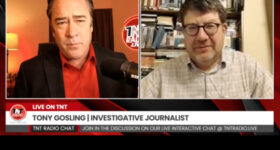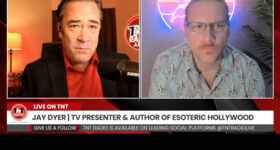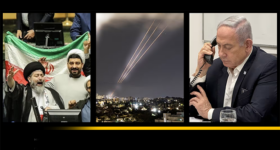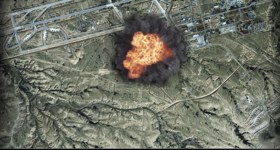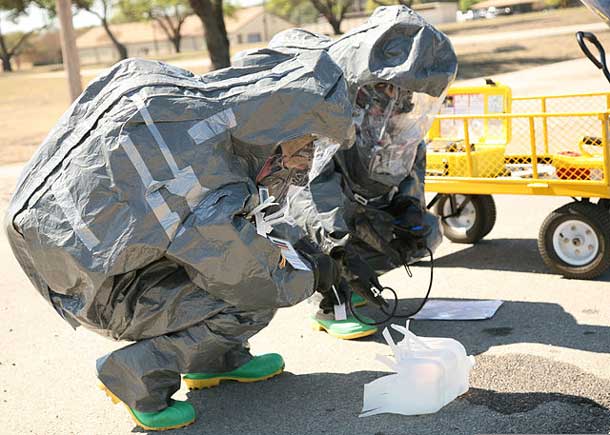
US Air Force personnel testing chemical weapons (Photo: Robin Cresswell. Source: Wikicommons)
According to the White House and Western mainstream media, on the morning of April 4, 2017, the Syrian ‘regime’ of Bashar Al-Assad carried out a sarin gas airstrike on the town of Khan Sheikhoun. Although no proper investigation was carried out, the event resulted in the US launching a barrage of Tomahawk missiles at a Syrian military airbase two days later. Two months have now passed, and there remains no proof that the Syrian government carried out this attack. In fact, none of the evidence supports that version of events.
21WIRE has been intensely scrutinizing this incident since the beginning. From the very day it occurred, problems with the Western narrative began to appear. As usual, the sources for this story were ‘opposition activists’ with an incentive to blame the Syrian government and draw the West into a military conflict with the Syria. (Assad, on the other hand, has no incentive to cross the West’s chemical weapons ‘red line’.) Photos of insufficiently protected first responders forced people to question whether sarin was even present. But as usual, mainstream media outlets such as BBC, CNN, and the New York Times jumped on board, cheerleading the West to the brink of war.
The incident, or at least the reporting that followed it, was eerily reminiscent of the 2013 sarin attack on the town of Ghouta – which the West similarly tried to pin on Assad, though that story was soon debunked and the incident proven to be a false flag attack. The Khan Sheikhoun incident follows the same pattern as Ghouta, with the West’s version of events failing to hold up under scrutiny and numerous indications that this was another false flag. Readers can find some of 21WIRE’s previous reporting on Khan Sheikhoun here, here, here and here.
A key critic of the Western narrative is Dr Theodore Postol, a scientist, professor and missile researcher with the Massachusetts Institute of Technology, whose criticism of both the 2013 Ghouta attack and the recent Khan Sheikhoun incident 21WIRE has covered at length. Dr Postol’s approach is purely forensic, analysing factors such as wind direction and weather conditions, all available photographic evidence, the munitions supposedly used, and the dynamics of the gas’s dispersal into the air. Within a day of the White House releasing its intelligence report on the incident, Dr Postol declared that it could not possibly be correct. Now, he has moved beyond that initial analysis and recently applied his forensic skills to a New York Times video, which is based almost exclusively on social media from terrorist-controlled areas.
Keep in mind that both the author of the following article, Robert Parry, and Dr Postol – the principal source for it – are heavyweight critical thinkers who are weighing in on this supposed sarin event.
Parry proved his worth as a journalist in the 1980s by being the one to break much of the Iran-Contra affair, among other stories. In the following article and others, Parry demonstrates a highly sophisticated and nuanced understanding of the situation in Syria, and as an independent thinker is explicitly critical of Western pundits’ and establishment figures’ tendency to suffer from groupthink and confirmation bias. (The word ‘groupthink’ is a misnomer, as the phenomenon is actually devoid of much thought; it would be more appropriate to call it ‘group non-think’.)
As for his part, Dr Postol is also an extremely credible source. Not only is he a scientist affiliated with a top university, but both his experience and his areas of study qualify him to speak up on matters such as this. Aside from his post at MIT, he has previously been a missile researcher for the Congressional Office of Technology Assessment and a scientific adviser to the Chief of Naval Operations, and he won the Norbert Wiener award for “uncovering numerous and important false claims about missile defenses.” It is also noteworthy that Dr Postol’s late former partner, Dr Richard Lloyd, was previously a UN weapons inspector.
Unfortunately, various forms of evidence are often misinterpreted, spun, and woven into narratives which suit a foreign policy outcome. This appears to be the case with the ‘trio’ of the New York Times, Bellingcat and Human Rights Watch, and their analyses of the alleged ‘chemical attack.’
Or, as Dr Postol wrote, the term “‘fake news‘… comes perilously close to actually describing what is happening.”
More on this story from Consortium News…
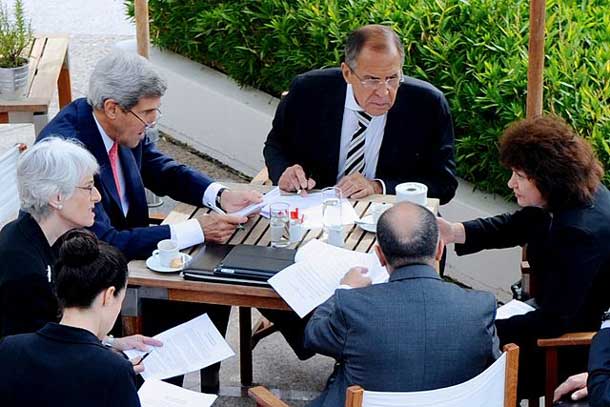
Former US Secretary of State John Kerry and Russian Foreign Minister Sergei Lavrov negotiate a chemical weapons agreement in 2013 (Photo: US Department of State. Source: Wikicommons)
Robert Parry
Consortium News
For U.S. mainstream journalists and government analysts, their erroneous “groupthinks” often have a shady accomplice called “confirmation bias,” that is, the expectation that some “enemy” must be guilty and thus the tendency to twist any fact in that direction.
We have seen this pair contribute to fallacious reasoning more and more in recent years as the mainstream U.S. media and the U.S. government approach international conflicts as if the “pro-U.S. side” is surely innocent and the “anti-U.S. side” is presumed guilty.
That was the case in assessing whether Iraq was hiding WMD in 2002-2003; it was repeated regarding alleged chemical weapons attacks in Syria during that six-year conflict; and it surfaces as well in the New Cold War in which Russia is always the villain.
The trend also requires insulting any Western journalist or analyst who deviates from the groupthinks or questions the confirmation bias. The dissidents are called “stooges”; “apologists”; “conspiracy theorists”; or “purveyors of fake news.” It doesn’t really matter how reasonable the doubts are. The mocking insults carry the day.
In addition, there is almost no accountability in those rare cases when the mainstream media and government propagandists must admit that they were demonstrably wrong. For every Iraq WMD confession – which resulted in almost no punishments for the “groupthinkers” – there are dozens of cases when the Big Boys just hunker down, admit nothing and count on their privileged status to protect them.
It doesn’t even seem to matter how well-credentialed the skeptic is or how obvious the failings of the mainstream analysis are. So, you even have weapons experts, such as Theodore Postol, professor of science, technology and national security policy at the Massachusetts Institute of Technology, who are ignored when their judgments conflict with the conventional wisdom.
The Syrian Case
For instance, in a little-noticed May 29, 2017 report on the April 4, 2017 chemical weapons incident at Khan Sheikhoun in northern Syria, Postol takes apart the blame-the-Syrian-government conclusions of The New York Times, Human Rights Watch and the Establishment’s favorite Internet site, Bellingcat.
Postol’s analysis focused on a New York Times video report, entitled “How Syria And Russia Spun A Chemical Strike,” which followed Bellingcat research that was derived from social media. Postol concluded that “NONE of the forensic evidence in the New York Times video and a follow-on Times news article supports the conclusions reported by the New York Times.” [Emphasis in original.]
The basic weakness of the NYT/Bellingcat analysis was a reliance on social media from the Al Qaeda-controlled area of Idlib province and thus a dependence on “evidence” from the jihadists and their “civil defense” collaborators, known as the White Helmets.
The jihadists and their media teams have become very sophisticated in the production of propaganda videos that are distributed through social media and credulously picked up by major Western news outlets. (A Netflix infomercial for the White Helmets even won an Academy Award earlier this year.)
Postol zeroes in on the Times report’s use of a video taken by anti-government photographer Mohamad Salom Alabd, purporting to show three conventional bombs striking Khan Sheikhoun early in the morning of April 4.
The Times report extrapolated from that video where the bombs would have struck and then accepted that a fourth bomb – not seen in the video – delivered a sarin canister that struck a road and released sarin gas that blew westward into a heavily populated area supposedly killing dozens.
The incident led President Trump, on April 6, to order a major retaliatory strike with 59 Tomahawk missiles hitting a Syrian government airfield and, according to Syrian media reports, killing several soldiers at the base and nine civilians, including four children, in nearby neighborhoods. It also risked inflicting death on Russians stationed at the base.
A Wind Problem
But the Times video analysis – uploaded on April 26 – contained serious forensic problems, Postol said, including showing the wind carrying the smoke from the three bombs in an easterly direction whereas the weather reports from that day – and the presumed direction of the sarin gas – had the wind going to the west.
Indeed, if the wind were blowing toward the east – and if the alleged location of the sarin release was correct – the wind would have carried the sarin away from the nearby populated area and likely would have caused few if any casualties, Postol wrote.
Postol also pointed out that the Times’ location of the three bombing strikes didn’t match up with the supposed damage that the Times claimed to have detected from satellite photos of where the bombs purportedly struck. Rather than buildings being leveled by powerful bombs, the photos showed little or no apparent damage.
The Times also relied on before-and-after satellite photos that had a gap of 44 days, from Feb. 21, 2017, to April 6, 2017, so whatever damage might have occurred couldn’t be tied to whatever might have happened on April 4.
Nor could the hole in the road where the crushed “sarin” canister was found be attributed to an April 4 bombing raid. Al Qaeda jihadists could have excavated the hole the night before as part of a staged provocation. Other images of activists climbing into the supposedly sarin-saturated hole with minimal protective gear should have raised other doubts, Postol noted in earlier reports.
There’s also the question of motive. The April 4 incident immediately followed the Trump administration’s announcement that it was no longer seeking “regime change” in Syria, giving the jihadists and their regional allies a motive to create a chemical-weapons incident to reverse the new U.S. stand. By contrast, the Syrian government seemed to have no logical motive to provoke U.S. outrage.
In other words, Al Qaeda and its propagandists could have posted video from an earlier bombing raid and used it to provide “proof” of an early-morning airstrike that corresponded to the staged release of sarin or some similar poison gas on April 4. Though that is just one possible alternative, it’s certainly true that Al Qaeda does not show very much humanitarian concern about the lives of civilians.
Critics of the White Helmets have identified the photographer of the airstrike, Mohamad Salom Alabd, as a jihadist who appears to have claimed responsibility for killing a Syrian military officer. But the Times described him in a companion article to the video report only as “a journalist or activist who lived in the town.”
Mocking the Russian/Syrian Account
For their part, the Syrian government and the Russians said Syrian planes conducted no airstrike early in the morning but did attack the area around noon. They speculated that the noontime attack may have struck chemical weapons stored by the jihadists, causing an accidental release of poisonous gas.
The Times jumped on the discrepancy between the reports of an early-morning attack and the Syrian-Russian account of a noontime strike to show that the Syrians and Russians were lying.
In response to Syrian President Bashar al-Assad asking, “How can you verify the video?” the Times narration by Malachy Browne smugly says: “Well, here’s how. Let’s take a look at videos, satellite photos and open source material of that day. They show that Assad and Russia are telling a story that contradicts the facts.”
Yet, the Times’ point about the Syrians and Russians lying about the time element makes little sense because the Syrians and Russians aren’t denying that an airstrike occurred. They acknowledged that there was an airstrike, albeit later in the day, and they speculate that the attack might have accidentally released chemicals stored by Al Qaeda’s Nusra Front. In other words, they gained no advantage by putting the time at noon instead of early in the morning.
There could have been honest confusion on the part of the Syrians and Russians as they struggled to understand what had occurred and how – or the noontime airstrike and the morning chemical release could have been unrelated, i.e., the jihadists and/or their foreign allies could have staged the early-morning poison-gas “attack” and the Syrian bombing raid could have followed several hours later but could have been unrelated to the poison-gas release.
However, for the Times and others to pounce on a seemingly meaningless time discrepancy, further shows how “confirmation bias” works. The “enemy” must be shown to be guilty, so any comment – no matter how innocent or irrelevant – can be cited to “prove” a point.
Double Standard on Trust
The Times also has displayed a bizarre bias when Syrians speak from government-controlled areas. Then, the Times always inserts language suggesting that the interviewees may be under coercion. Yet the Times assumes that “witnesses” inside Al Qaeda-controlled territory are commenting honestly, freely and without fear of contradicting the jihadists.
The Times’ double standard is particularly curious because United Nations investigators don’t even dare enter these jihadist zones because the jihadists have a history of beheading journalists and other civilians who get in the way.
An example of this bias was on display in Wednesday’s Times in an article about the family of Omran, the boy made famous by a photo of him in an ambulance. The article discussed the family’s ordeal and mentioned the father’s vocal support for the Assad government.
However, because the family backed Assad, the Times inserted this caveat: “Syrians appearing on state television or on channels associated with the Assad government are not able to speak freely. The government exerts tight control over all information broadcast about the war, including interviews with civilians, who can be coerced and threatened with arrest if they criticize the government.”
Yet, the Times treats interviews with people inside jihadist-controlled territory as inherently truthful with the interview subjects described in favorable or neutral terms, such as “rescue workers,” “journalists,” “eyewitnesses” or sometimes “activists.” There is rarely any suggestion that Al Qaeda might either be controlling these messages or intimidating the interviewees, who are usually denouncing Assad, what the Times and other mainstream news outlets want to hear.
False-Flag Evidence
This gullibility has continued despite evidence that the jihadists do generate sophisticated propaganda to promote their cause, including staging “false-flag” chemical weapons attacks. For instance, U.N. investigators who examined one alleged chlorine-gas attack by the Syrian government against Al-Tamanah on the night of April 29-30, 2014, heard multiple testimonies from townspeople that the event had been staged by rebels and played up by activists on social media.
“Seven witnesses stated that frequent alerts [about an imminent chlorine weapons attack by the government] had been issued, but in fact no incidents with chemicals took place,” the U.N. report stated. “While people sought safety after the warnings, their homes were looted and rumours spread that the events were being staged. … [T]hey [these witnesses] had come forward to contest the wide-spread false media reports.”
Accounts from other people, who did allege that there had been a government chemical attack on Al-Tamanah, provided suspect evidence, including data from questionable sources, according to the U.N. report.
The report said, “Three witnesses, who did not give any description of the incident on 29-30 April 2014, provided material of unknown source. One witness had second-hand knowledge of two of the five incidents in Al-Tamanah, but did not remember the exact dates. Later that witness provided a USB-stick with information of unknown origin, which was saved in separate folders according to the dates of all the five incidents mentioned by the FFM [the U.N.’s Fact-Finding Mission].
“Another witness provided the dates of all five incidents reading it from a piece of paper, but did not provide any testimony on the incident on 29-30 April 2014. The latter also provided a video titled ‘site where second barrel containing toxic chlorine gas was dropped tamanaa 30 April 14’”
Some other “witnesses” alleging a Syrian government attack offered curious claims about detecting the chlorine-infused “barrel bombs” based on how the device sounded in its descent.
The U.N. report said, “The eyewitness, who stated to have been on the roof, said to have heard a helicopter and the ‘very loud’ sound of a falling barrel. Some interviewees had referred to a distinct whistling sound of barrels that contain chlorine as they fall. The witness statement could not be corroborated with any further information.”
The U.N. report might have added that there was no plausible explanation for someone detecting a chlorine canister in a “barrel bomb” based on its “distinct whistling sound.” The only logical conclusion is that the chlorine attack had been staged by the jihadists, and their supporters then lied to the U.N. team to enrage the world public against the Assad regime.
Another Dubious Case
In 2013, the work of Postol and his late partner, Richard M. Lloyd, an analyst at the military contractor Tesla Laboratories, debunked claims from the same trio — Bellingcat, the Times and Human Rights Watch — blaming the Syrian government for the even more notorious sarin-gas attack outside Damascus on Aug. 21, 2013, which killed hundreds.
Postol and Lloyd showed that the rocket carrying the sarin had only a fraction of the range that the trio had assumed in tracing its path back to a government base.
Since the much shorter range placed the likely launch point inside rebel-controlled territory, the incident appeared to have been another false-flag provocation, one that almost led President Obama to launch a major retaliatory strike against the Syrian military.
Although the Times grudgingly acknowledged the scientific problems with its analysis, it continued to blame the 2013 incident on the Syrian government. Similarly, Official Washington’s “groupthink” still holds that the Syrian government launched that sarin attack and that Obama chickened out on enforcing his “red line” against chemical weapons use.
Obama’s announcement of that “red line,” in effect, created a powerful incentive for Al Qaeda and other jihadists to stage chemical attacks assuming that they would be blamed on the government and thus draw in the U.S. military on the jihadist side. If Obama’s expected “retaliation” had devastated the Syrian military in 2013, Al Qaeda or its spinoff Islamic State might well have taken Damascus.
Yet, the 2013 “groupthink” of Syrian government guilt survives. After the April 4, 2017 incident, President Trump took some pleasure in mocking Obama’s weakness in contrast to his supposed toughness in quickly launching a “retaliatory” strike on April 6 (Washington time, although April 7 in Syria).
Continue this report at Consortium News
READ MORE SYRIA NEWS AT: 21st Century Wire SYRIA Files
SUPPORT OUR WORK BY SUBSCRIBING & BECOMING A MEMBER @21WIRE.TV





